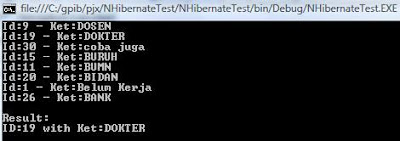I have two instances of MySQL, one using 5.0.27 and the other 5.5.3. My requirement is to transfer all database to a new one. I try to backup all database and restore using My SQL Administration Tools. All database successfully restored (imported) to the new instance, but got problem with privilege that reports Column count of mysql.proc is wrong. Expected 20, found 16. The table is probably corrupted.
Then I look at the backup script but could not found command to create/insert user privilege on mysql database. Probably I missed something, and glad to hear from you. I switch the way, and try following steps:
1. Do backup:
shell5027>mysqldump -uroot -ppass --all-database > C:\temp\sqldataku.sql
Then opened the backup script and found commands to create-insert users privileges on mysql database, something like these:
CREATE DATABASE /*!32312 IF NOT EXISTS*/ `mysql` /*!40100 DEFAULT CHARACTER SET latin1 */;
USE `mysql`;
DROP TABLE IF EXISTS `db`;
CREATE TABLE `db` ( .... )...;
INSERT INTO `db` VALUES ('%','cms','fercms','Y','Y','Y','Y','Y','Y','Y','Y','Y','Y','Y','Y','Y','Y','Y','Y','Y'),....);
INSERT INTO `user` VALUES ('localhost','root','*7775476747C6AD73358FA54DAED7828A72014B4E','Y','Y','Y','Y','Y','Y','Y','Y','Y','Y','Y','Y','Y','Y','Y','Y','Y','Y','Y','Y','Y','Y','Y','Y','Y','Y','','','','',0,0,0,0),('%','fercms','*778F407DE7C65307389FA34AAED7828A72014B4E','N','N','N','N','N','N','N','N','N','N','N','N','N','N','N','N','N','N','N','N','N','N','N','N','N','N','','','','',0,0,0,0), ...);
mysql.user table contains user list (with passwords) and their global privileges, mysql.db handles users' database-level privileges.
2. Do restore:
shell553>mysql -uroot -ppass < C:\temp\sqldataku.sql
3. Do flush privilege:
shell553>mysql -uroot -ppass
mysql> flush privileges;
mysql>\q
Test the database using myprogram or tools but come with error message: Column count of mysql.proc is wrong. Expected 20, found 16. The table is probably corrupted;
4. Do upgrade, by run this command:
shell553>mysql_upgrade -uroot -ppass --tmpdir=C:\temp\
Looking for 'mysql.exe' as: shell553\mysql.exe
Looking for 'mysqlcheck.exe' as: shell553\mysqlcheck.exe
Running 'mysqlcheck' with connection arguments: "--port=3306"
drupal64.access OK
drupal64.actions OK
fkm.phpbb_acl_groups OK
fkm.phpbb_acl_options OK
Running 'mysql_fix_privilege_tables'...
ERROR 1547 (HY000) at line 167: Column count of mysql.proc is wrong. Expected 20, found 16. The table is probably corrupted
ERROR 1547 (HY000) at line 168: Column count of mysql.proc is wrong. Expected 20, found 16. The table is probably corrupted
ERROR 1547 (HY000) at line 181: Column count of mysql.proc is wrong. Expected 20, found 16. The table is probably corrupted
WARNING: NULL values of the 'character_set_client' column ('mysql.proc' table) have been updated with a default value (cp850). Please verify if necessary.
WARNING: NULL values of the 'collation_connection' column ('mysql.proc' table) have been updated with a default value (cp850_general_ci). Please verify if necessary.
WARNING: NULL values of the 'db_collation' column ('mysql.proc' table) have been updated with default values. Please verify if necessary.
FATAL ERROR: Upgrade failed
Once again I run the command:
shell553>mysql_upgrade -uroot -ppass --tmpdir=C:\temp\
...
...
Running 'mysql_fix_privilege_tables'...
OK
I did the command again, and reported that "This installation of MySQL is already upgraded to 5.5.3-m3, use --force if you still need to run mysql_upgrade".
If these solve my requirement above (I have to see in future), than I suspect that first try using MySQL Administration Tools should work as well.



